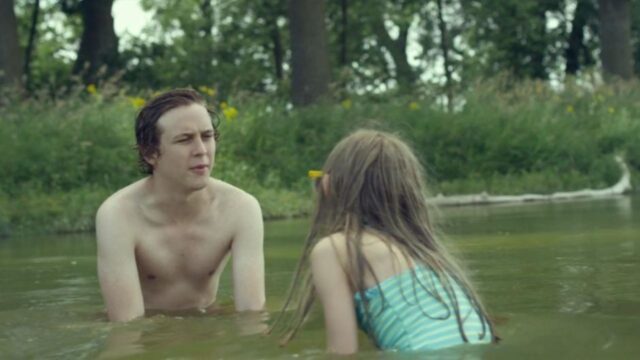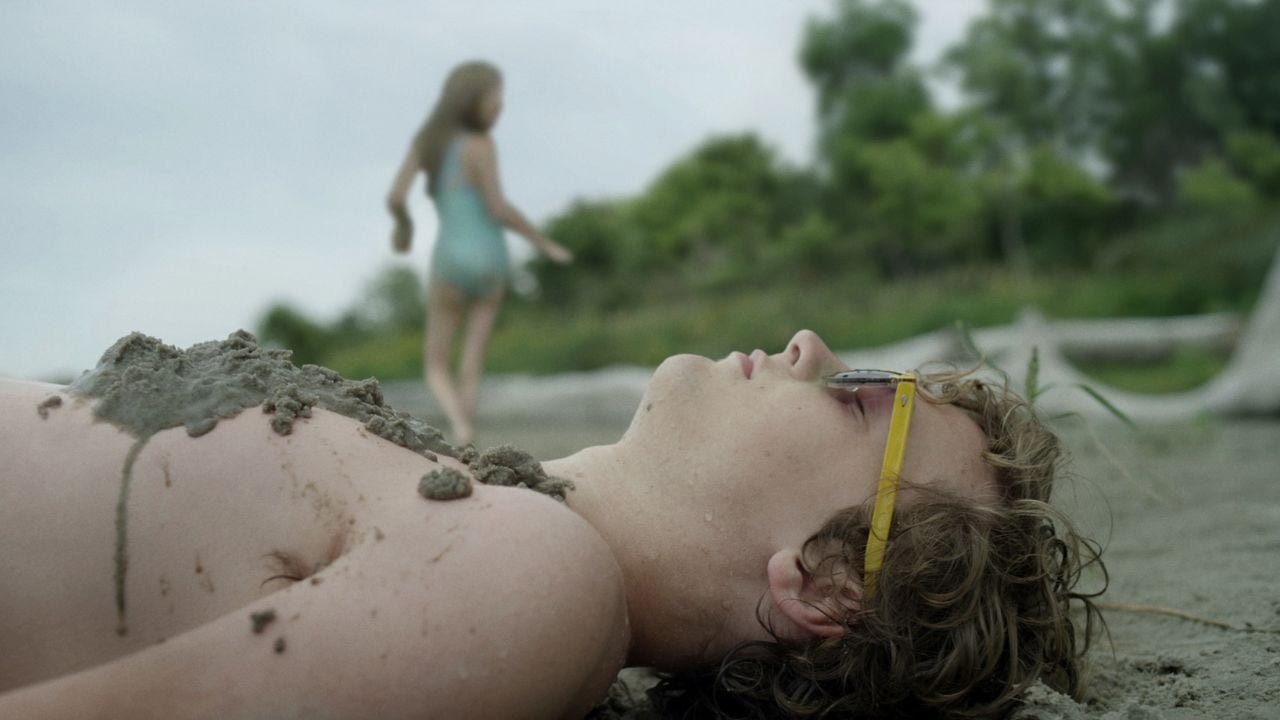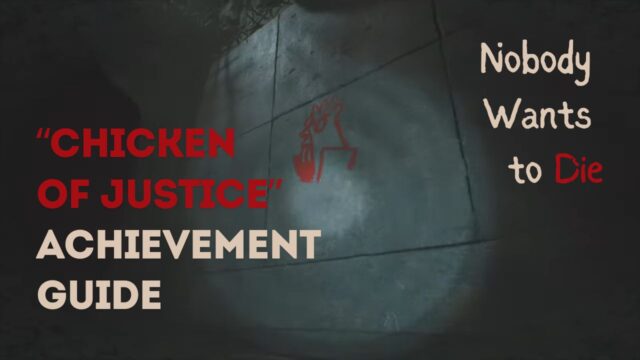Take Me To The River ending explains the long-buried family secret. It takes an awkward and mind-bending turn at the end. Keith reveals the secret in front of Ryder, Don, and Molly.
The ending scene shows Molly and Ryder moving inside the jungle with their horse. However, Molly decides to swim in the river, to which Ryder replies by saying he has no swimsuit.
Despite that, they take a swim and start chatting. The 9-year-old girl reveals that she has a boyfriend back in school.
Molly climbs and sits on Ryder’s shoulder and starts humping. Ryder is left in shock.
Laying on the bank of the river, Ryder is covered with wet sand by Molly, who takes his sunglasses with her and asks him to count to 50 while she moves away from there inside the jungle.
Finished counting to 50, Ryder starts panicking when Molly doesn’t seem around. He starts searching for her. Next, the scene takes us to Ryder’s house, where Molly, Keith, Cindy, and Don await him.
Out of nowhere, Keith asks Molly about the chicken fighting and how Ryder took it. To which she replied by giggling. Keith says, “Ryder, didn’t you learn it from your mother?” Keith further reveals how Cindy, Ryder’s mother or Keith’s sister, used to like to play chicken fighting when they were small.
Both Cindy and Ryder are stunned. Don is unaware of the chicken fighting. Ashamed by her act, Cindy slaps Ryder and later apologizes for the mistake she committed at a young age.
She confessed she didn’t know what she was doing back then.
The movie ends with the song “Under Pressure,” indicating Cindy’s secret is now under pressure and will pop up sometime soon.
1. What Is the Secret in Take Me To The River Movie?
The Secret in Take Me To The River Movie is a Chicken fighting incident between Keith and Cindy. Later, the same incident happened between Ryder and Molly.
The chicken-fighting thing began with Keith and Cindy, and their grandmother always blamed Keith for the incident.
Keith seemed to want to recreate the scene with Ryder and Molly since he was angry with Cindy for pushing herself on him when they were young.
Keith used Molly as a pawn in this game to get back to Cindy and turn the family against her.
Take Me To The River movie spoiler indicates that Cindy and Keith encountered physical intimacy through chicken fighting and that Ryder and Molly are their children.
In one scene, Molly reveals to Ryder that she doesn’t belong to her family. In another scene, Keith asks Ryder to point out the oldest among his four daughters.
We can notice that Molly is older than others which implies that the remaining three daughters were born later from Keith’s wife.

2. Take Me to the River Ending: what happened between Cindy and Keith?
Early in the film, it becomes clear that there is some bad blood between Ryder’s mother, Cindy, and Molly’s father, Keith. Although he is civil toward her and her family, he closely monitors Molly whenever she tries to spend time with Ryder. As such, when she returns from the barn with blood on her clothes, Keith immediately snaps at Ryder, even physically dragging the boy away from his daughter.
The extreme response seems far more than general protectiveness, especially after he outright dismisses the idea that Molly could have started her period.
Moreover, Cindy seems convinced that Keith treats her son poorly as revenge against her. Yet, neither the audience nor Ryder knows what exactly happened between the two siblings to warrant such a reaction. Cindy tries to explain Keith’s dislike for her away by citing his displeasure at her inheriting their father’s money. However, since he inherited the land, the same seems like an unlikely source for the feud.
Ultimately, Ryder discovers the truth after playing with his young cousin at the river on their way home. At the river, Molly, energetic as she is, gets on top of Ryder’s shoulders and urges him to play “Chicken Fighting” with her.
Nevertheless, since chicken fighting requires more than two people, Ryder is confused by her desire to play the game. To make matters worse, Molly starts inappropriately rocking into the back of his neck while “playing chicken fighting.” Later, when Keith talks to Ryder and his family, he tells the latter that he and Cindy used to play chicken fighting as kids.
By now, Ryder and the audience know chicken fighting is a euphemism and likely leads to more sexual scenarios. Therefore, Keith dislikes Cindy because of what happened between them. At the precipice of puberty, Cindy likely instigated something sexual with Keith without fully understanding it.
As a result, since he is older, he gets blamed for it after their mother finds out. Due to the same, Keith despises Cindy for painting him out as immoral and eventually running away from the farm to the big city. Likewise, he assumes Cindy’s son must have done something similar to his daughter and blows up at him.
At first glance, the film seems like a coming-of-age movie about a gay teenager surrounded by conservative relatives. Although the plot takes a sharp turn early in the story, his position within his family as an outsider remains the same. Ultimately, Ryder doesn’t come out to his extended family and leaves with his secret. Throughout the film, he stays away from most of his relatives and only spends much time with Keith’s family when he has dinner with them.
During the same, Ryder shares his interest in songwriting and sings a song for the family. Due to the song’s prominent queer theme, Keith likely picks up on the fact that he is gay. Eventually, the latter also eases up on Ryder and approves of him being a father figure to Molly. Therefore, it’s safe to assume Keith probably figures out the truth about his sexuality, given he barely ever tries to hide it.
Nevertheless, Ryder’s sexuality remains secret from the rest of the family, as Cindy wishes. As such, the cycle of secrets and miscommunication persists within her family. Topics anyone may deem uncomfortable continue to be brushed under the rug, setting the next generation up for failure just as Keith and Cindy were.
3. Unraveling the intriguing culmination of “Take Me To The River”: A deep dive into symbolism
“Take Me To The River,” a captivating and enigmatic cinematic creation directed by Matt Sobel, concludes with an ending that leaves audiences simultaneously spellbound and contemplative. With its intricate narrative layers and thematic complexities, the film draws viewers into a world of family dynamics, secrets, and unexpected revelations.
As the credits roll, the film’s enigmatic ending beckons for analysis, delving into the profound symbolism and open-ended interpretations that define its conclusion.
4. Journeying through secrets and unveilings
At its core, “Take Me To The River” is a poignant exploration of family secrets, hidden traumas, and the intricate web of relationships. The film’s ending serves as the apex of these themes, expertly unraveling the emotional complexities that have simmered beneath the surface throughout the narrative.
The protagonist, Ryder, acts as a conduit through which the audience delves into the labyrinthine depths of human behavior, memory, and familial connections.
The film’s climax occurs during a family reunion at a rural farmhouse, where an innocent game of truth or dare spirals into a harrowing unraveling of concealed truths.
As these revelations cascade into the open, the atmosphere becomes tense, and the characters are forced to confront the unsettling implications of their past decisions. This climax lays the groundwork for the enigmatic ending that engenders further contemplation instead of providing resolutions.

5. A mosaic of interpretations: open-ended closure
One of the film’s most captivating attributes is its refusal to deliver a definitive conclusion, leaving room for many interpretations. In the final moments, Ryder stands by a river, a recurring motif throughout the film. His gaze into the water is pregnant with confusion, introspection, and the unknowable.
The film concludes with this evocative shot, inviting viewers to speculate on the significance behind Ryder’s actions and the broader implications.
One plausible interpretation revolves around the notion of catharsis. Ryder’s contemplation of the river can be seen as an attempt to cleanse himself of emotional baggage and unburden the secrets that have haunted his family. By confronting the river, he seeks redemption and liberation from the weight of the past, suggesting a potential for healing and growth.
Conversely, the river might symbolize a threshold between reality and the inexplicable. Ryder’s gaze into the water could signify his confrontation with life’s uncertainties and the mysterious realms beyond human comprehension. This interpretation enhances the film’s eerie tone, implying that absolute closure may be elusive, mirroring the complexities of real life.
6. Visual allegory and atmospheric profundity
“Take Me To The River” leverages its visual aesthetics to convey meaning; the ending is no exception. The river bears profound symbolism, representing the passage of time, the currents of existence, and the irrevocable impact of the past on the present. Its serene yet disquieting presence mirrors the emotional undercurrents that flow within the characters.
The film’s meticulous lighting and color palette also play a pivotal role in the final scenes. The subdued lighting and muted hues contribute to the film’s unsettling atmosphere, enhancing the mystery surrounding the ending. The interplay of shadows and reflections on the water’s surface adds another layer of complexity, underscoring the film’s exploration of concealed truths and the interweaving of the seen and the hidden.
7. In conclusion
“Take Me To The River” concludes with a spellbinding yet enigmatic ending that encapsulates the film’s themes of family secrets, psychological complexity, and the unknown. Through visual symbolism, narrative intricacy, and an unsettling atmosphere, the ending encourages audiences to grapple with the intricate experiences of the characters and the enigmatic nature of human existence.
By resisting a tidy conclusion, the film challenges viewers to engage in introspection, ponder the mysteries of life, and explore the depths of their interpretations. Ultimately, the ending of “Take Me To The River” is a haunting reminder that specific questions may remain unanswered and that the journey itself often holds more significance than the destination.
8. About Take Me to the River
Take Me to the River is a 2015 American drama film directed by Matt Sobel, starring Logan Miller, Richard Schiff, and Robin Weigert.
A Californian teenager’s plan to come out at his Nebraskan family reunion gets derailed when a bloodstain on his young cousin’s dress makes him the unwitting suspect of abuse. T strange encounter places him at the center of a long-buried family secret.







No Comments on Take Me To The River Ending Explained: Is The Secret Revealed in The End?